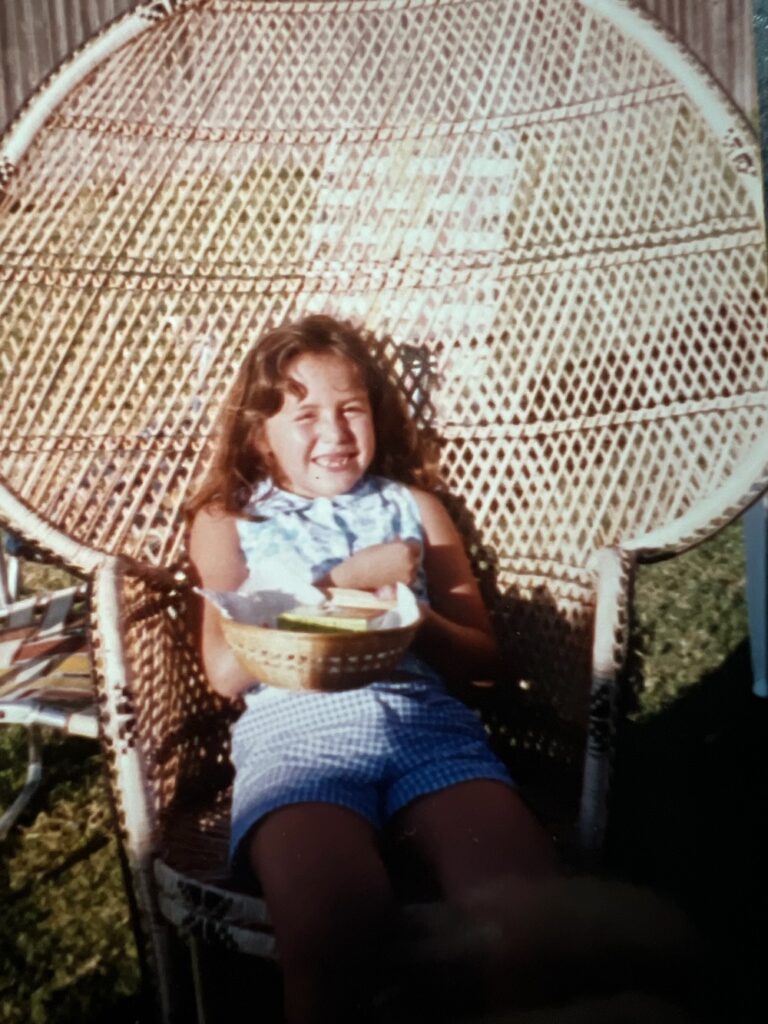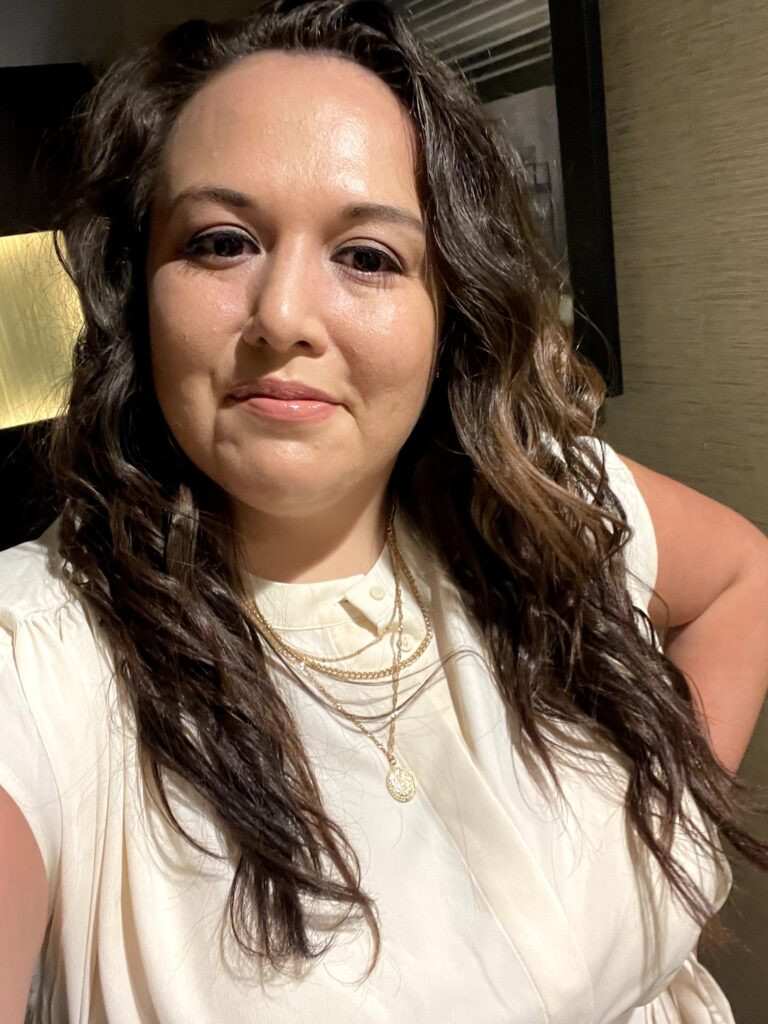
I never thought I’d overcome my childhood abuse and trauma, then I tried EMDR therapy as an adult and everything changed
Trauma knows no bounds; it can happen to anyone at any time and any place. Unfortunately, traumatic events can have lasting effects long after the actual event and can alter your life for many years to come. As someone who is clinically diagnosed with Complex Post Traumatic Stress Disorder or CPTSD, I have firsthand knowledge of this. You might be familiar with PTSD or Post Traumatic Stress Disorder as it has been depicted in movies, books, and widely discussed on social media. CPTSD, on the other hand, is a relatively new term coined in 1992 to describe people who have experienced repeated trauma over a long period. Survivors of CPTSD often struggle with many of the symptoms of PTSD survivors but can experience even more complex triggers and emotions.
I am a survivor of CPTSD, and I experienced prolonged sexual, physical, and emotional abuse at the hands of my sister’s father from ages 11 to 16. Until I was 22, this was my shameful secret that I was afraid to acknowledge. I refused therapy for most of my twenties and thirties due to the fact I thought I could disassociate and block out all the bad but found that ignoring the problem never makes it go away. It was not until a run-in with the law and a DWI that I decided it was time to talk to someone. That was when I discovered a newer type of therapy called EMDR (Eye Movement Desensitization and Reprocessing).

Living with untreated childhood trauma
After the abuse stopped (when my abuser moved out of our home), I thought maybe I’d be OK. I was merely 17 and a senior in high school, so I really had no idea what was to come or how the prolonged and repeated trauma might affect me. I graduated high school and went to college but struggled. There, I dealt with deep depression and turned to alcohol, recreational drug use, and promiscuity to numb my pain. I refused to think about my childhood or deal — on any level — with what had happened to me.
My late 20s and 30s were spent in a string of one-night stands, drinking until I blacked out and trying recreational drugs and pills. One night in 2008, a week after my grandfather died, I was so blackout drunk that I crashed my car and ended up in jail. Still, this did not stop me from retreating to substances to numb my pain. I attempted suicide by pills twice, yet did not believe therapy was right for me. Prompted by my mother after my suicide attempt, I visited an on-campus therapist but bailed midway through the session.
My late 20s and 30s were spent in a string of one-night stands, drinking until I blacked out and trying recreational drugs and pills. One night in 2008, a week after my grandfather died, I was so blackout drunk that I crashed my car and ended up in jail.
Honestly, I felt like no one knew what I was going through or could help me. In that mindset, I preferred turning to substances than directly dealing with what was going on in my head. I could barely sleep; I had night terrors since most of my trauma happened at nighttime; I even had to sleep with the lights on. Still, I felt like no one could help me. When I decided drugs were no longer working to numb the pain, I started to pour myself into work and became obsessed. Workaholics had nothing on me; I would work 10 hours or more each day, constantly turning my mind to work because it was better than sitting alone with my thoughts. I did anything possible to avoid my thoughts, never realizing that all of these symptoms were part of my CPTSD, which can be triggered by sights, sounds, and even smells.

The final straw that brought me to trauma therapy
In 2018, my three-year-old nephew died from cancer. Shortly before his death, when we found out his cancer had returned, I got a DWI as a full-blown adult in my ‘30s. I was having issues in my marriage, stressed out at work, and when I became consumed by the news of my nephew’s terminal illness, I retreated to my old ways. I still did not think I needed therapy, but since part of my DWI sentence was therapy sessions, I gave it a shot. When I finally spoke to a court-mandated therapist, I felt something during that session that I hadn’t felt in years — relief.
After the mandated session, I decided it was time to seek out someone I could talk to who could understand my traumas and help me cope in better ways. Soon after, I found a trauma specialist and started weekly sessions. We began with talk therapy, and I unloaded years of trauma. These sessions were intense and exhausting; I felt like giving up multiple times throughout. I was on the verge of throwing in the towel when my therapist recommended a new approach. She suggested we try a newer, nontraditional type of treatment technique called EMDR (Eye Movement Desensitization and Reprocessing).
My experience with the healing modality EMDR
I’ll admit I was skeptical at first. My therapist explained EMDR as a way to reprocess old traumas and give them less weight, meaning you could look back on a period of time and be able to process your emotions without being scared or in “fight or flight” mode. EMDR (Eye Movement Desensitization and Reprocessing) can happen a few ways. To start off, your therapist will have you sit both feet on the floor in a comfortable position, they will either have you follow an object (typically their finger or a pen) with your eyes or, like I did, you can opt to have your therapist tap you. We sat in chairs next to each other and at the start of the session, my therapist would begin tapping from one knee to the other to begin. We worked out a treatment plan that would include weekly sessions where every other session would include EMDR.
First, my therapist had me list out “targets” or traumas in my life that I wanted to process. This list included everything from my childhood abuse to receiving poor grades and the deaths in my family. We listed each target in the order in which they occurred so that I could process them one after the other and start to heal my inner child. I was then told to create a safe place for my mind to wander if EMDR became too overwhelming. Everyone’s safe space will look different, for example, my “space” had me with my dog in a secluded jungle surrounded by a waterfall with the sun beaming down on my face. My therapist suggested I think of a memory or place that felt warm and safe. At this point, I was a little terrified of what we might uncover in these sessions, but I knew I had to carry on. Next, we settled on tapping instead of eye movements as my form of bilateral stimulation. My therapist pulled up a chair in front of mine and began tapping in rhythmic movements from one of my knees to the other. The bilateral stimulation is used as a means of relaxing or recreating the REM cycle of sleep. Once all of these cogs were in place, it was time for my first session.
That very first EMDR session was one of the most challenging therapy sessions I have ever experienced. I felt emotions I hadn’t felt in years and remembered things I had hidden deep inside. We started the session with me going back in my mind to my first “target.” I was tasked with describing what I saw, heard, and smelt. We went into vivid details down to the color of the shirt I was wearing. I was overwhelmed and exhausted, and we ended with a meditation. At the end of the session, I was tasked with visualizing a vault or box, the container could be any form of locked box that was unbreakable, and locking everything we discussed in that box until the next EMDR session.
After the session, I sat in my car in silence for nearly an hour. I felt shaken by the thought of everything I felt and was confused about things I had no memory of, but I was determined to get to the bottom of why I was feeling the way I did. Processing that first target took several weeks; for each session, I would go in and do talk therapy for the first few minutes, and then we would dive into the “target.” I would return to that time and place and uncover more feelings and emotions. We would go deeper into the incident, and finally, we were able to process the ultimate sense of abandonment that was at the very bottom of that trauma.
Could EMDR (Eye Movement Desensitization and Reprocessing) be right for you?
EMDR has no age limits and can help with a wide range of mental health disorders. Its primary focus is to help you reprocess traumatic events and allow your body to experience those emotions and feelings in a safe space. If you are someone who has experienced trauma once or on an ongoing basis, EMDR could be a good fit. If you have tried talk therapy but not seeing the desired results, EDMR could help you process the underlying emotions at the root of your feelings. Because EMDR focuses on less talk and more recollection of memories and reprocessing, it helps to allow your brain to process and heal.
Because of EMDR, memories that had tormented my life and triggers that were around every corner became a faint memory, and I was finally able to feel truly happy for the first time in many years. I honestly wish I would not have waited so long to try therapy because now, I feel like I missed out on so many years in my youth that could have been better; less pain-filled.
This type of therapy can be exhausting, and your desired results might take a while to experience, but if you are someone who has tried everything and are still struggling, you might want to talk to a therapist about EMDR. When choosing to move ahead with the therapy, remember to take care of yourself and be in the moment when you can. The more you are able to sit with your emotions and really feel them, the better your potential outcome will be.
The best possible outcome
My EMDR therapist and I worked for over a year to stop my night terrors and help me learn to correctly process the events that occurred in my childhood, including sexual and physical abuse. During that time, I was able to discover memories and feelings buried deep within and was able to process many of my traumas successfully. There are no words to describe the feeling of processing years worth of trauma and finally healing my inner self. Because of EMDR, memories that had tormented my life and triggers that were around every corner became a faint memory, and I was finally able to feel truly happy for the first time in many years. I honestly wish I would not have waited so long to try therapy because now, I feel like I missed out on so many years in my youth that could have been better; less pain-filled.

Thanks to EMDR and my amazing therapist, I am now leading a successful life with the ability to process grief and trauma correctly. The nightmares have stopped. Restful sleep is no longer an unattainable goal; more often than not, I experience soothing sleep and wake up ready to take on my day. I am in a very healthy relationship with my husband and have been married for eight years, a stability I never dreamed of before. In addition, I now have a healthy work-life-balance — I’m able to spend time with my dogs and enjoy time with my husband.
Triggers do still exist — for instance, when I’m in my hometown, that entire city is a trigger. But even during those visits, I am now able to use one of the many tools learned in therapy to quickly process what I’m feeling and go on about my day. Some triggers have actually subsided completely, which feels amazing. Essentially, I no longer let my diagnosis drive my days, I am so much more in control of my life than I ever was before. And I’ve accepted that although my trauma is and will always be a part of me, it no longer has the chokehold it once did on my life. My past no longer controls my future and for me, that’s the deepest kind of healing I could hope for.



